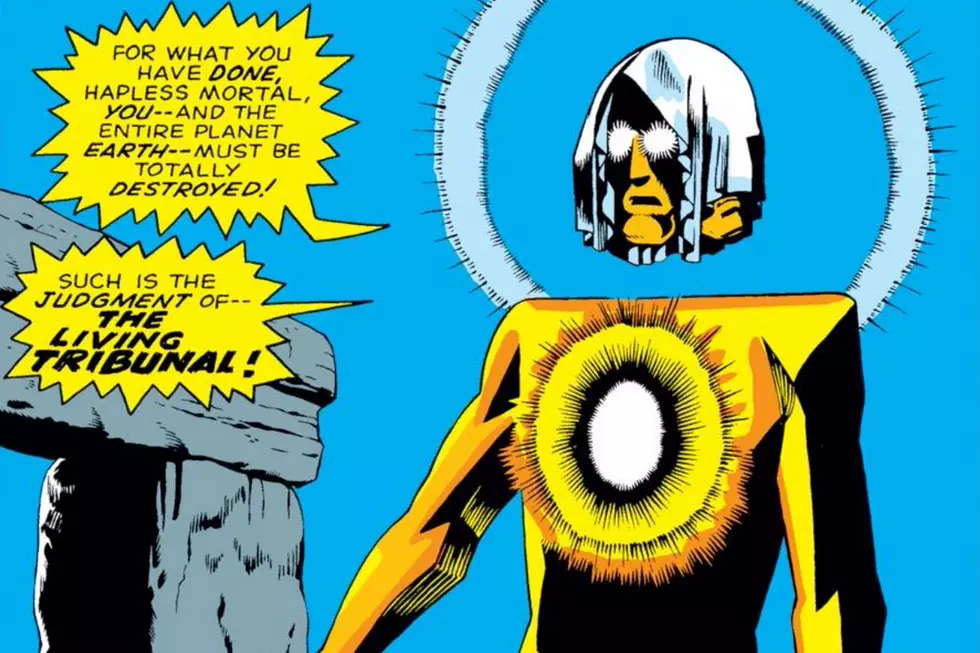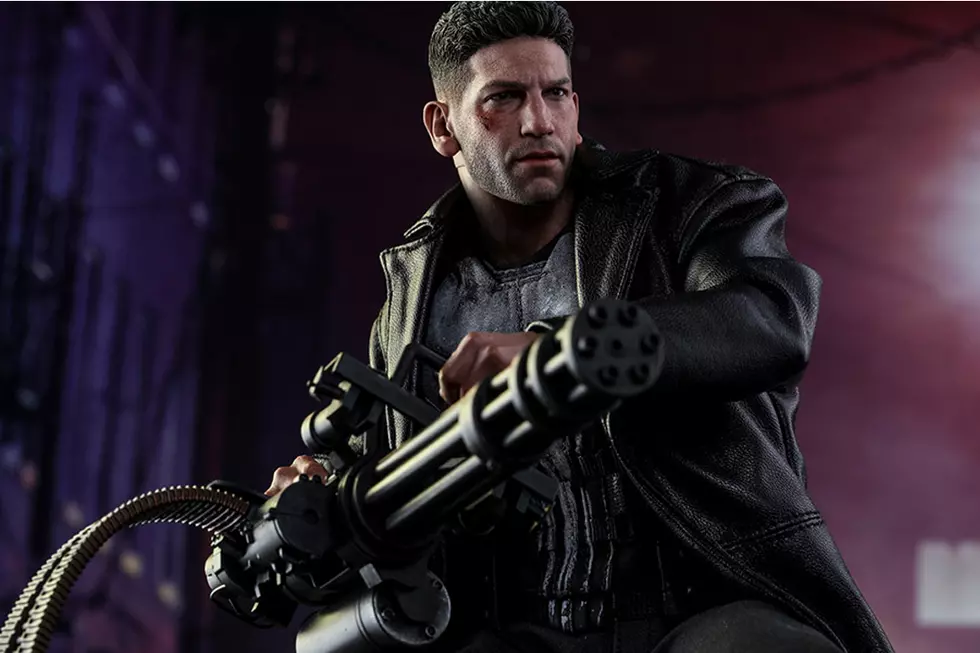
Born 89 Years Ago Today: Gene Colan, the Virtuoso of Figurework and the Man Who Defined Daredevil
Nobody drew like Gene Colan. That might sound like the sort of hyperbole one expects to read in a tribute piece, but in this case, it's true – Gene Colan was a total original, whose work looked nothing like any other comic artist's before or since.
Part of that was the way he seemed to approach images from an entirely different direction than anyone else: rather than simply drawing figures, he captured the way that light presented them. That might seem like a strange and abstract distinction, but it actually gets right to the heart of how our visual sense works – when we see things, we're actually seeing how they react to or produce light. So where other artists drew shapes and characters, Colan drew the illumination and shadows, the way our eyes perceive those elements.
That methodology also made Colan a virtuoso at creating mood and atmosphere – his use of shading captured the emotion of scenes as well as it defined the action taking place. His heroes and villains were built of the light they captured and the darkness that they cloaked themselves in, physical forms defined by how they moved through the world. His pages depict not just what things are, but how they look and feel.
But all theory and analysis aside, Gene Colan's art simply worked. His style more than held its own alongside the best in the business for many decades, winning the respect of his peers and the admiration of readers and comic art aficionados everywhere.
His career in comics began in 1944, straight out of high school, and after a brief hiatus for military service, resumed in earnest in 1947. He worked for a number of publishers over the next decade and a half, honing his skills, building his creative arsenal, and developing the techniques that would eventually propel him to the top of the industry.
In 1965, Stan Lee asked him to come work full-time for Marvel, the company that was busily turning comics upside-down with their groundbreaking slate of superhero titles. Colan initially kept his options open, continuing to freelance for other companies while handling artistic duties on Sub-Mariner and Iron Man stories under the pseudonym "Adam Austin", but by mid-1966, he was fully committed to Marvel and took over as regular penciller on Daredevil with issue #20.
The series lacked a clear identity, having seen a number of artists stepping in and out in rapid succession, and Colan, now back to using his own name, made the most of the opportunity, illustrating all but four of of the next eighty-one issues and defining the character for a generation.
He also contributed to a number of other Marvel titles throughout the '60s and early '70s, continuing his associations with Sub-Mariner and Iron Man; penciling a memorable run on Doctor Strange (and contributing to the character's controversial "blue mask" costume redesign); handling a number of back-up stories and fill-ins; co-creating and illustrating the first half-dozen appearances of Marvel's first Captain Marvel; co-creating and drawing the first appearance of the original Guardians Of The Galaxy; and working on a twenty-one issue run of Captain America, in the course of which he co-created The Falcon, the first African-American super-hero.
In 1972, after the Comics Code loosened regulations on horror comics, he teamed with Marv Wolfman for Marvel's Tomb Of Dracula #1, co-creating the cast of characters (including a certain vampire hunter named Blade) and illustrating the entirety of the series' seventy-issue run.
Through the rest of the decade, he also took on numerous other projects, including penciling 21 issues of Steve Gerber's Howard The Duck, and contributing a number of sci-fi, horror, fantasy, and superhero stories to both mainstream Marvel titles and the company's line of black-and-white magazines.
The '80s were a time of change and upheaval for Colan, as he came into conflict with Jim Shooter, Marvel's editor-in-chief, and ended up leaving the company and going to work for DC. He immediately took over as one of the lead Batman artists, working on both Detective Comics and the flagship Batman title for the next five years, while also partnering with writer Don McGregor on two Nathaniel Dusk miniseries, reteaming with Marv Wolfman to co-create and produce fourteen issues of the supernatural mystery title Night Force, and pencilling the cult-classic miniseries Jemm: Son Of Saturn.
Colan also began to work with independent publishers over the course of that decade, producing projects for Eclipse, Dark Horse, and Archie, and by the end of the decade, had returned to the fold at Marvel (following Shooter's dismissal as EIC).
He continued to work for various publishers for most of the rest of his life, pencilling Clive Barker's Harrowers series and handling special assignments for Marvel (including occasional returns to his signature characters Daredevil, Dracula, and Blade), re-reuniting with Wolfman on a whole new take on the Dracula mythos for Dark Horse, and taking on occasional other projects (such as providing art for Rob Zombie's first solo CD and illustrating Marvel's never-completed Bob Marley: Tale Of The Tuff Gong biography series).
Colan became a constant and cheerful presence at conventions, legendarily kind and generous to fans, always ready with a story or a comment or a compliment, occasionally even handing out a card with his home address and phone number and an invitation to "call if you'd ever like to come by."
His final completed comics work was the extra-length special Captain America #601, a comic that was made available in both a full-color and a limited black-and-white edition (shot direct from his pencils), and went on to win the 2010 Eisner Award for best single issue. Despite ill health and failing eyesight, he continued to produce sketches and commissions and make appearances at conventions until just a few months prior to his death in 2011.
Stan Lee, with his inimitable knack for alliteratively accurate nicknames, alternately referred to him in print as "Genial" Gene and "Gentleman" Gene, and by all accounts, both were equally appropriate. He was one of comics' greatest artists, a consummate craftsman and a person who extended respect and kindness to all he knew.
On the anniversary of his birth in 1926, it's our pleasure to remember and celebrate Gene Colan's life and artistry. Happy Gene Colan Day!
http://comicsalliance.com/tags/sam-wilson/
More From ComicsAlliance









